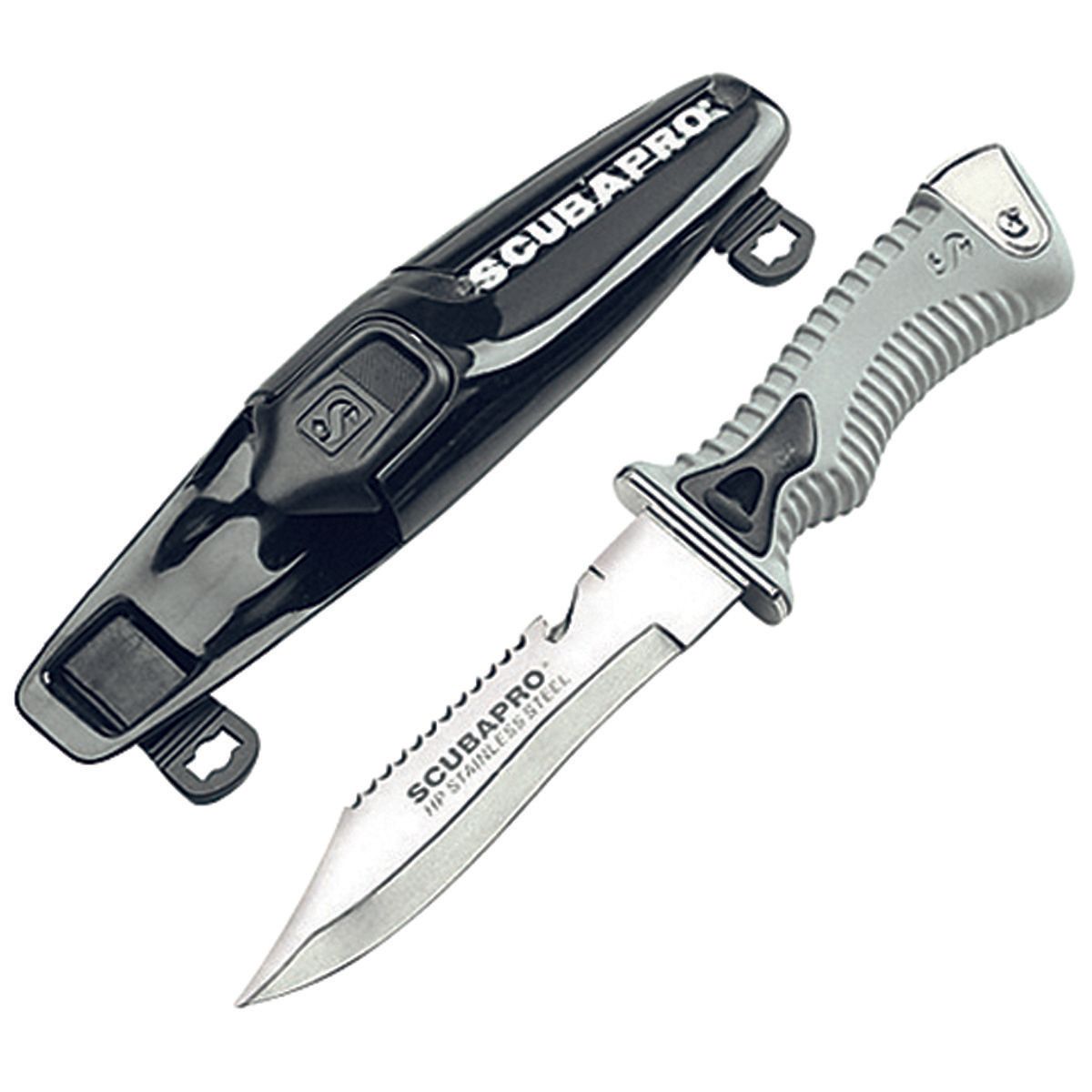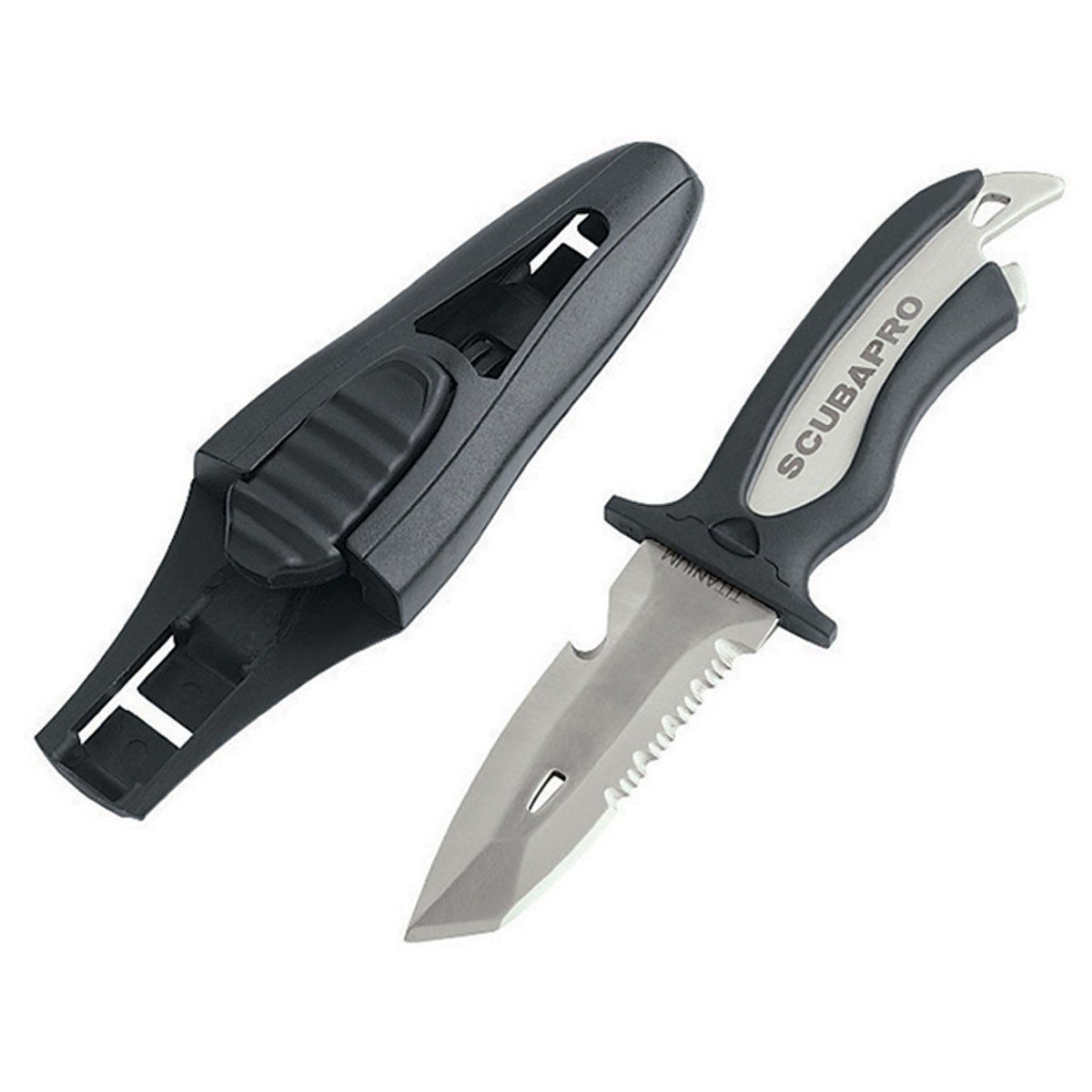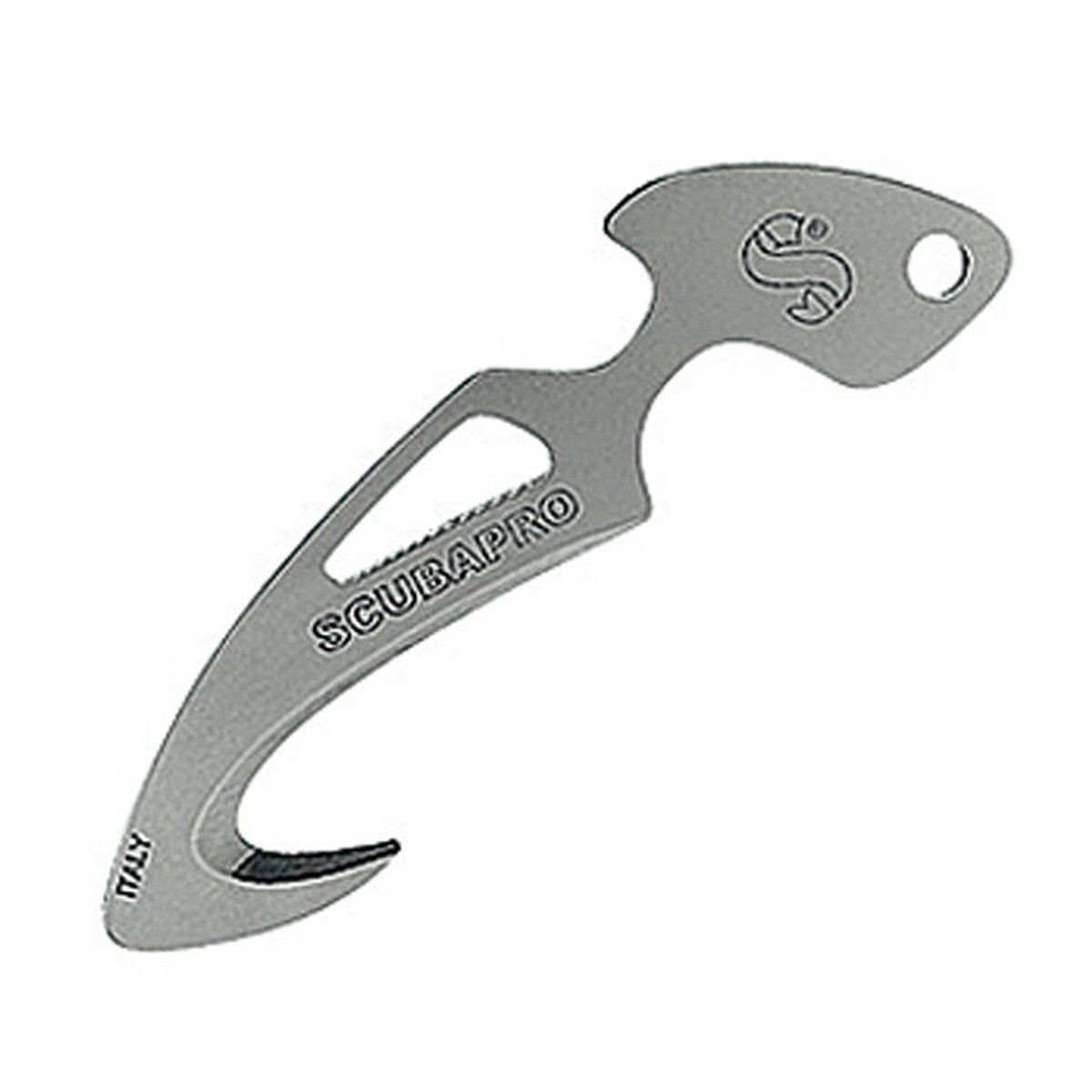Purchase Dive Tools and Dive Knives
Dive Knives and Tools
Pointed Tip or Blunt Tip
One of the oldest jokes in diving is, "Don't buy a pointed tip knife unless you want a blunt tip knife." Before environmental awareness became a thing, divers used their dive knives for a variety of activities that included pounding, chipping, and prying - all great ways to break the tip off a knife. Now we use our dive tools primarily for cutting entanglement hazards like fishing line, nets, and ropes. What's on the business end of your dive knife isn't the point anymore.
Common tips still include curved points and dagger points but many dive knives are now available in a blunt tip (looks like a big screw driver) or a combo-tip that has an angled tip that gives you a point and a flat surface. Some of the flat surfaces are edged allowing for very precise cutting.
These days it's probably more important to look at the rest of the knife. Is the blade straight edged, serrated, or some combination of the two? Ropes are much easier to saw through with a serrated blade than they are to cut through with a straight edge. Does the blade have an edged notch that can be used as a line cutter? Also pay attention to the handle. Is there a metal knob on the base that can be used as a tank banger or does it have a bottle opener - the most useful feature on any dive knife?
You should also consider things like what type of metal your dive tool is made out of, is the size right, does it fit your hand comfortably, and what kind of mounting options are available. The good news is that you have a lot of options and dive knives have become small enough and inexpensive enough that many divers actually carry a primary and a backup. After all, if you ever truly need to use a cutting tool underwater, it might just be the thing that saves your life.
Steel or Titanium
The most common materials in use for dive knives and tools are titanium and stainless steel. Titanium is a good material for tools being used in salt water because it does not rust like steel. Titanium blades often tend to be sharper and maintain their edge longer. Be careful, they're sharp! Unfortunately titanium is usually more expensive than stainless steel and it is more brittle than steel. No prying or pounding with that expensive titanium knife!
For diving, not all stainless steels are created equal. The best stainless steel is called a hydro-alloy and usually includes a higher percentage of elements like chromium and zinc to prevent rusting and metal degradation. Stainless steel knives are easy to sharpen and maintain. Rinse with fresh water and dry them completely after use. Use a light coating oil for long term storage.
Line Cutters, Shears, and Multi-Tools
Dive tools are not limited to dive knives. Today divers have a wide variety of options available. Common among these new options are line cutters, shears, and multi-tools.
A line cutter can be someone as simple as a razor blade with a handle, similar to a letter opener, made to snag a piece of thin line and direct it across the cutting edge. Larger line and mesh cutters often look like a large hook or talon with the cutting edge on the inside of the curve. The larger variety works well on lines, ropes, and the kind of mesh and webbing often found in fishing nets.
Shears are also sometimes referred to as EMT shears because that's what they are! They can generate enough cutting force to cut metal fishing leaders and even something as thick as a penny! They are great options that can cut almost anything and they are a safe option for divers of all ages. Unfortunately, these type of shears were never designed for prolonged exposure to salt-water. They rust and degrade quickly requiring frequent replacement.
Multi-tools are devices that usually contain one or more folding knives, pliers, wrenches, and picks. They are like having a small toolkit in your pocket! Unfortunately many multi-tools were not designed for prolonged exposure to salt-water and require constant maintenance, cleaning, and lubrication to keep the various tools useable. They can also be hard to use when wearing gloves.
Mounting Options
There are many different mounting options for dive knives and dive tools. The most common include leg straps, wrist straps, hip belt attached, BCD attached, and hose mounted. You can even find small line cutters that will attach to the handle of a light and folding knives that can be carried in a pocket.
Recently dive knives have become smaller and lighter weight opening up a variety of mounting options including dive computer wrist straps. Many manufacturer's of BCDs are also including mounting grommets and pocket retractors that can be used for dive knives and tools.
The best mounting option for you will be the one that allows you to reach, deploy, and replace your dive tool with a minimum of effort. When you need your dive tool you don't have time to fumble around looking for it. Make sure you can reach your dive tool and operate any locks or clasps with whatever dive gear you are wearing. Changing from a wetsuit in warm water to a drysuit and gloves in cold water might necessitate a change in the placement of your dive tool or even which dive tool you take with you.












